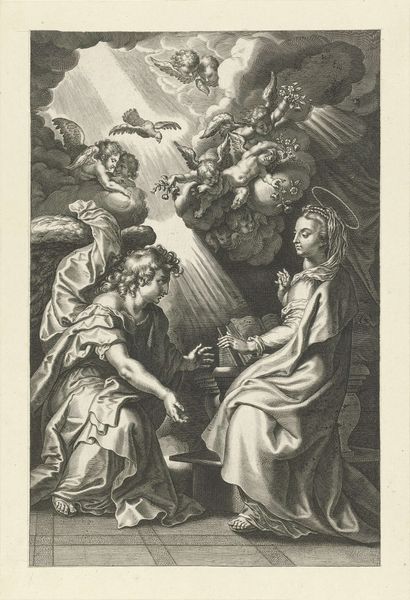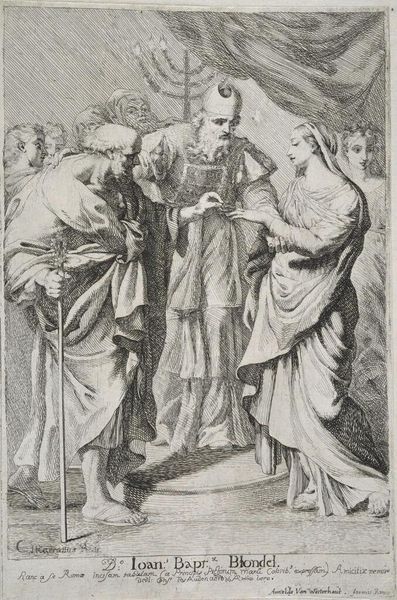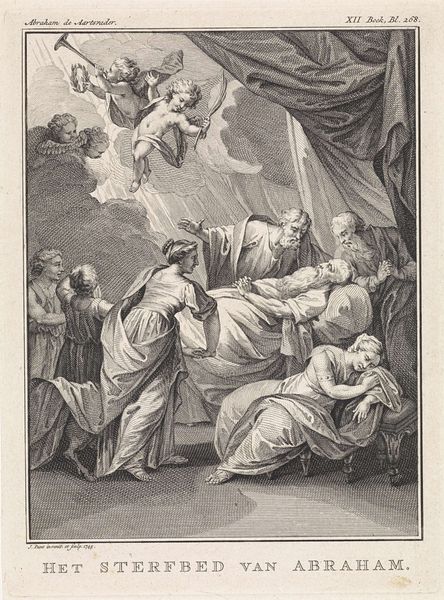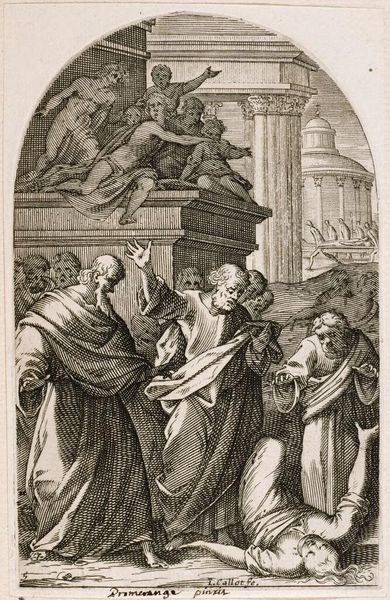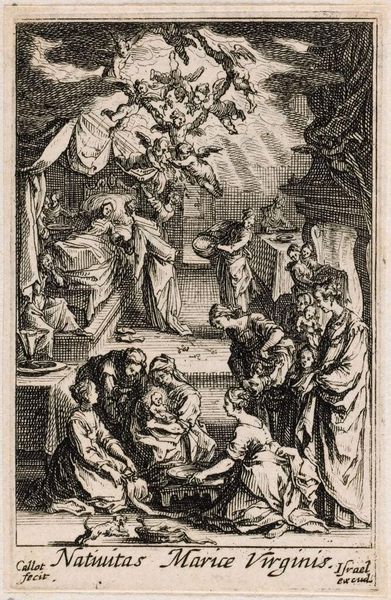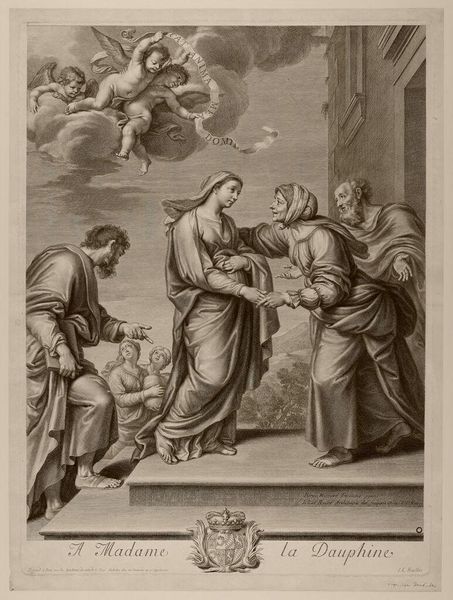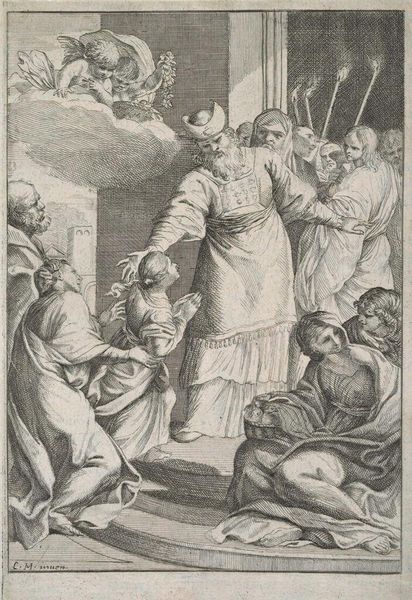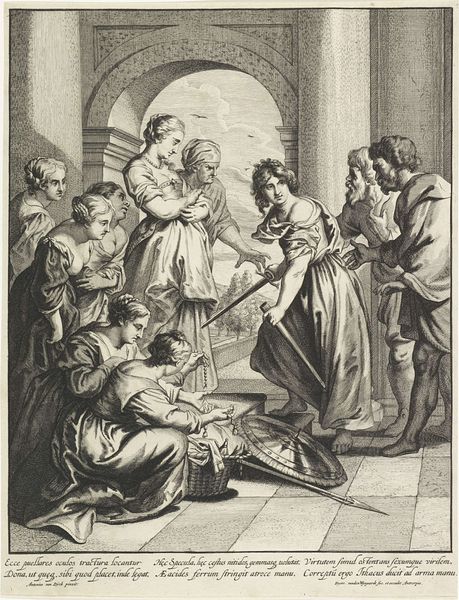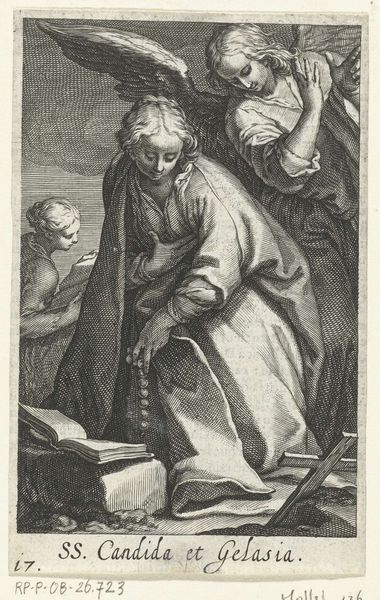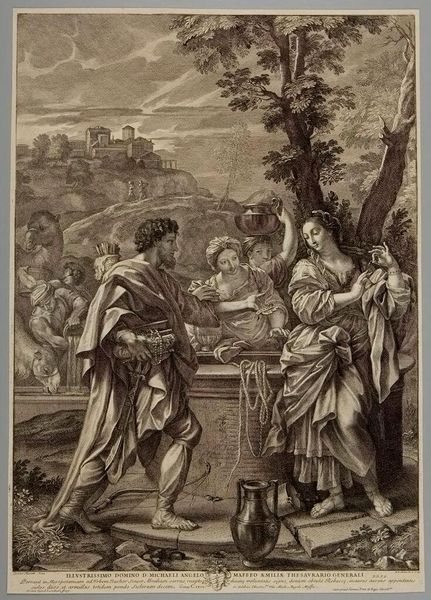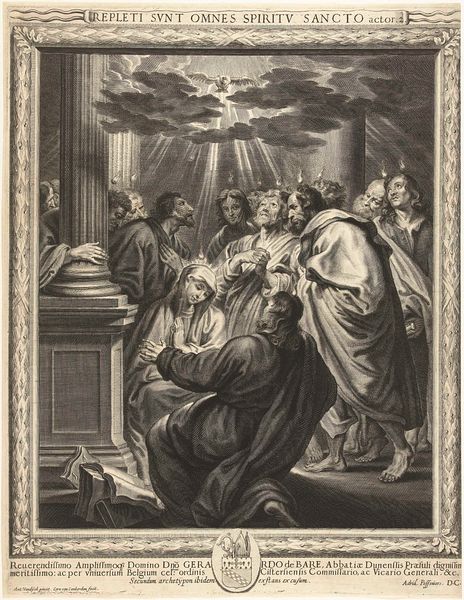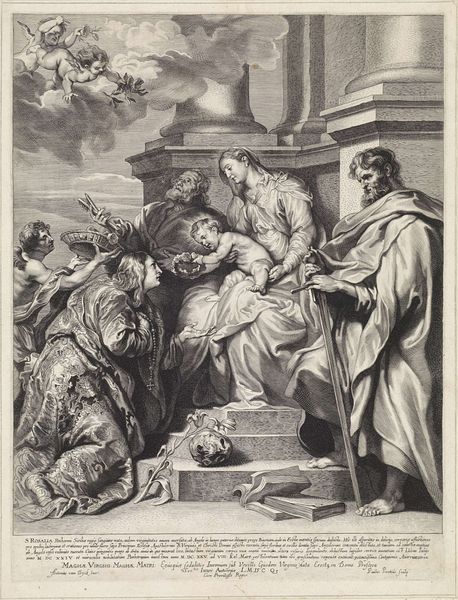
Copyright: CC0 1.0
Editor: So, here we have Joseph Wagner's "Last Supper," from the 18th century, at the Harvard Art Museums. It's an engraving, and it feels so dramatic. What strikes you about this piece? Curator: Well, the very notion of ‘lastness’ is politically charged. Who decides what is last, and whose voices are silenced in that declaration? This image, embedded in religious power structures, reflects historical inequalities. How does Wagner’s portrayal reinforce or subvert those power dynamics inherent in the "Last Supper" narrative? Editor: I see, so it's not just a religious scene, but a commentary on power. Curator: Precisely! And consider who is absent or marginalized within this representation. Where are the women? The othered? This absence speaks volumes about the dominant ideologies of the time, and perhaps, even now. Editor: I never thought about it that way, it gives a new perspective. Curator: Art is never neutral. Examining its historical and social context reveals its true potency.
Comments
No comments
Be the first to comment and join the conversation on the ultimate creative platform.
